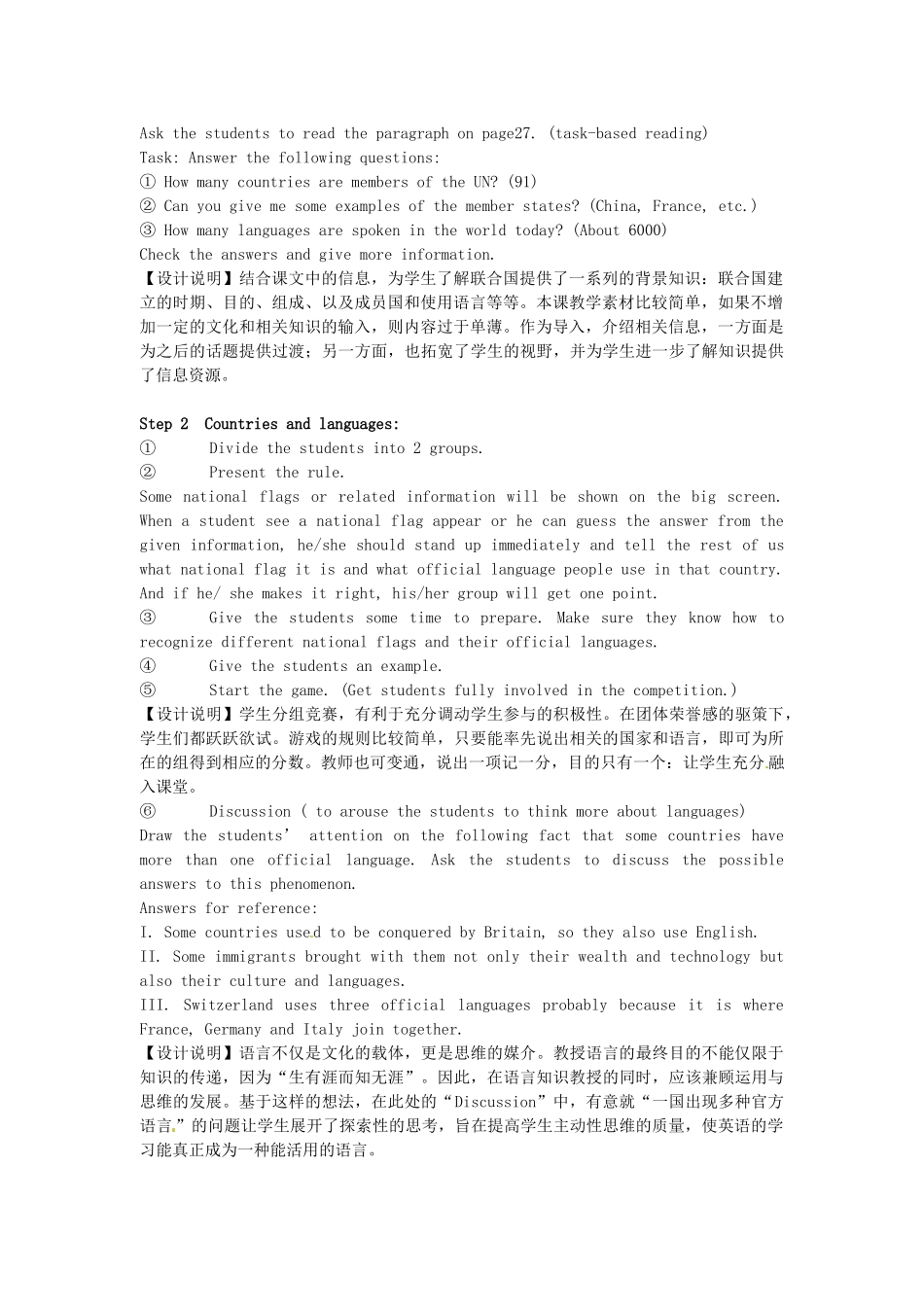模块 3 unit. 2 Period two 教案 (2)Unit 2 LanguageWord power课堂设计指导思想: “Word power”是新教材中出现的一个新板块,它旨在科学地、有效地、有趣地扩充学生的词汇量。“Word power”在设计上采用了与本单元主题相照应的思路,内容上不受课后词汇表的限制,期冀在同一语意场中通过语境的辅助以及构词法等相关知识的输入实现学生词汇的扩展。本节课是以听、说、读为主的词汇教学课。词汇教学应当“有层次”并兼顾“知、情、意”。首先,“有层次”是指词汇教学应努力遵循认知规律,按照学生温故知新——探索新知识——使用新知识——巩固新知识的客观规律进行教学。其次,兼顾“知、情、意”是指词汇教学要有:知——词汇知识、学习策略以及词汇所蕴含的文化知识的输入;情——师生间的情感互动、学生的情感融入与兴趣的激发,以及情感体验的过程;意——人文精神和人生意义的体悟与提升。Teaching aims: 1.Get to know the names of some countries and their official languages;2.Learn the differences between formal and informal English;3.Get some background knowledge of related topics;4.To discuss the important ways that help to achieve better understanding between people from different cultures.Teaching procedures: Step 1 Lead-inThe teacher introduces the topic of the UN.Basic facts about the UN:Fact: When was the United Nations founded?A clue: In the year 2005 the UN celebrated its 60th birthday. (background knowledge)The students are supposed to get the answer: In 1945.Fact2: Why was it founded?Inform the students of the following aspects:The UN works on: ①peace and security ②human rights ③humanitarian affairs ④international law ⑤economic and social developmentIn a word, it works on international affairs.Fact3: How was it organized?Show the students the diagram of the UN system.Point out three of them which the students might be familiar with: UNESCO, WHO, WTO.Introduce the 6 principal organs of the UN.Offer the students 2 websites where they can f...


